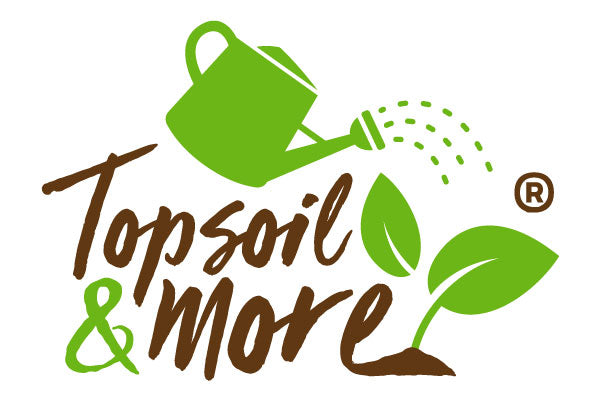Choosing the right turfing topsoil is essential for creating a lush, beautiful lawn. Selecting the wrong type of soil can have a negative impact on the look and health of your lawn, so it’s important to understand the basics when it comes to selecting the ideal turfing topsoil. In this blog post, we will provide our top tips for choosing the perfect turfing topsoil for your new lawn.
Understanding the Importance of Quality Topsoil for Your New Lawn
When it comes to creating a beautiful and healthy lawn, quality topsoil is crucial. The right topsoil can make all the difference in how well your new lawn grows and thrives.
So, why is quality topsoil so important? Well, topsoil is the uppermost layer of soil, rich in organic matter and nutrients. It provides the necessary foundation for your grass to take root and flourish. High-quality topsoil promotes better water retention, drainage, and aeration, which are essential for strong root development and overall lawn health.
On the other hand, using poor-quality topsoil can lead to poor water retention, poor drainage and overall poor establishment of your turf.
By investing in good quality, BS Certified topsoil, like that provided by Topsoil & More, you can ensure that your new lawn has the best possible start. It will set the stage for lush, green grass that you can enjoy for years to come. So, when choosing your turfing topsoil, prioritise quality to create the lawn of your dreams.
Factors to Consider When Choosing Turfing Topsoil
When choosing turfing topsoil for your new lawn, there are several important factors to consider. First and foremost, consider the soil composition. The ideal topsoil should be a balanced mixture of sand, silt, and clay. This ensures good drainage while retaining enough moisture for healthy grass growth.
In addition, consider the texture of the topsoil. It should be loose and friable, allowing for easy root penetration and oxygen flow. Avoid topsoil that is too compacted or heavy, as this can hinder grass growth. Turf thrives in sandy soil so avoid black, compost rich soil for your turfing project.
Lastly, consider the reputation and reliability of the supplier. Look for a reputable company like Topsoil & More that offers quality topsoil and has positive customer reviews.
By considering these factors, you can choose the best turfing topsoil for your new lawn, setting the foundation for a beautiful, healthy, and vibrant lawn that will be the envy of your neighbourhood.
Different Types of Topsoil for Turfing and Their Benefits
When it comes to choosing the right topsoil for turfing your new lawn, it's important to understand the different types available and their benefits. Here are some of the most common types of topsoil and what they have to offer:
1. Sandy topsoil: Sandy topsoil is known for its excellent drainage properties. It allows water to flow through easily, preventing waterlogged soil that can suffocate your grass roots. It's ideal for wet areas with heavy rainfall or poor drainage and waterlogging. An example of this type of soil is Topsoil & More’s Turfing Rootzone Topsoil 50/50 mix for wetter gardens.
2. Loamy topsoil: Loamy topsoil is a balanced mixture of sand, silt, and clay. It provides good drainage while retaining enough moisture for healthy grass growth. It's versatile and can be used in a wide range of soil types. An example of this type of soil is Topsoil & More’s Turfing Rootzone Topsoil 70/30 mix.
Choosing the right type of topsoil for your new lawn will depend on factors such as your soil conditions, and specific lawn needs. Consider consulting with a professional such as Topsoil & More to determine the best topsoil for your specific situation. By choosing the right topsoil, you can lay the foundation for a healthy and thriving lawn.
Tips for Preparing the Soil and Laying Topsoil for Optimal Results
Preparing the soil and laying topsoil properly are crucial steps for achieving optimal results when turfing a new lawn. Follow these tips to ensure that you set the stage for a healthy and thriving lawn:
1. Clear the area: Start by removing any existing vegetation, such as weeds or old grass. This will create a clean canvas for your new lawn.
2. Soil preparation: Loosen the existing soil by using a garden fork or a tiller. This will help improve drainage and ensure better root penetration. Remove any large rocks or debris from the soil as well.
3. Level the ground: Use a rake or a leveling tool to even out the soil surface. This will prevent any low spots or bumps that could affect the appearance and health of your lawn.
4. Apply a layer of topsoil: Once the soil is prepared, it's time to add a layer of quality Turfing Topsoil from Topsoil & More. Spread the topsoil evenly over the area, aiming for a thickness of about 2-3 inches (approx. 50-75mm). Use a rake to level off the surface.
5. Compact the topsoil: Gently compact the topsoil using a lawn roller or by walking on it by shuffling your feet (if you don’t have a roller). This will help to avoid settlement and undulations in your final lawn surface and will promote root growth.
6. Water the area: After laying the topsoil, water the area thoroughly. This will help settle the soil and give moisture for your turf to start knitting in.
By following these tips, you will create an ideal environment for your new lawn to take root and thrive. Keep in mind that proper soil preparation and topsoil application are essential for a successful turfing project.
We will follow up this blog with another blog with top tips on how to lay your new turf in the next few days so keep an eye out!

